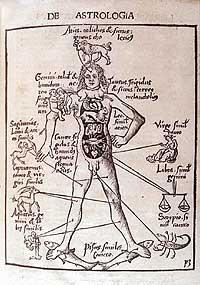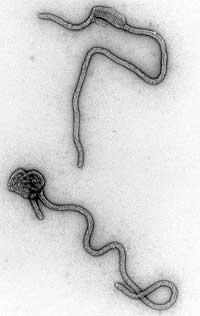Epidemics throughout history
From the hand of wars and epidemics
The epidemic caused by sex
Ebola: Ebola: Too fast for an epidemic?

Why do today's British speak English? It is not a silly question. There are many factors involved in the process of consolidating a language. And in the case of English, one of these factors was the medieval black plague.
In England they have had the opportunity to succeed other languages: Latin, Danish, French, German, etc. Precisely at the time when it was becoming a nation, the French dominated its cultural environment. In fact, in 1066, coming from the south, the Normans seized the monarchy and replaced the English aristocracy and clergy. Consequently, French became the official language of the government.
This situation, which lasted three hundred years, was altered by the black plague, which replaced the substitutors. It must be taken into account that the epidemic caused the massacre of the population, both at the lower and higher levels of society. In addition to the humble village, barons, counts, jauntxos, abbots and many more died.
And the survivors occupied their places. In society there was an investment, that is, many poor people were enriched, and with it the Anglo-Saxon language, English, returned to government. French was not used for 1385.
In progress

Although this is nothing more than an anecdote in the history of epidemics, it perfectly reflects the indirect effect of these traveling diseases. The population was reduced rapidly, much faster than society could bear. To fight the disease was too fast and, of course, there was no solution.
Upon arriving in England, the black plague toured all over Europe and caused great pain: one third of the population died; in Italy, for example, half died. Current medicine has the means to combat it, but at the time they did not have basic information to understand resources. People easily become infected and die. Point. Some believe that the disease is spread through the view of a patient. How could they prove the opposite? After all, they were not at all wrong, since it was transmitted by the airway.
The history of black plague is surprising: it provoked it for almost twelve centuries. The first documented appearance dates from 542 in the Mediterranean and the last from 1721 in Marseilles. The disease has not completely disappeared, but it is totally controlled.
So read, it seems that the disease began abruptly, for no reason, appeared and expanded without more. But, in general, the human being himself facilitates the media of epidemics. Black plague is also a good example.
The disease is caused by the pollution of the Yersinia pestis. This bacterium was traveling in the bodies of fleas and fleas in rats. It was first discovered in India, but due to the ships it spread to the Mediterranean and China, where it appeared in epidemic form, VI. and VII. centuries, respectively.


In any case, the most famous was the XIII. It was in the twentieth century, coinciding with the success of the Mongolian empire. It is no coincidence. The Empire improved the media and increased trade in Asia. The number of traders increased and transport was facilitated not only for the human being, but also for rats, and therefore for fleas, and therefore also for bacteria. As a result, the disease spread from China to Crimea, opening the doors to the plague.
The rats toured aboard the ships the road towards Europe, a road impoverished by man. Eighteen years later, the bacterium was present in Russia, Italy, Palestine, Arabia, Egypt, Tunisia, Spain, France, England, Germany, Denmark, Scotland and Ireland. And despite the completion of that appearance, it frequently reappeared, at first every eleven years and then every fifteen, approximately.
Dirt Dirt Dirt
But ships and trade are not the only ones that have opened the way to epidemics. The truth is that history is longer. They are largely a consequence of civilization. From the beginning.
It can be said that the first steps of civilization are related to livestock and agriculture. This means that the man had secured the source of daily food, but in return he had to live in a certain place to care for animals and plants.
As for the relationship with microorganisms, the new situation represented a radical change, the largest in history.

In general, the nomadic person is healthier than the sedentary, since he introduces in his diet varied foods. The sedentary has the food insured, but from day to day it just changes. In addition, living in a fixed place allows to have large populations. In this situation, diseases are easily transmissible and extensive. From one person to another, and from animals to people in others.
Tuberculosis and diphtheria, for example, are contagious diseases of animals; and baztanga, the disease that caused the first pests, is very similar to a bovine disease. Therefore, if these diseases have facility to jump from one human population to another, the risk of occurrence of epidemics is high.
In addition, agriculture brought with it the channeling of water. And in areas of large population, these canals were ideal places to accumulate excrements. The years passed until the excrement and drinking water were properly separated. This is the problem of cholera.
This kind of problems appeared mostly in the cities. In general, they were dirty places where microorganisms and their transporters could enjoy unbeatable environments: rats, birds, insects... On the other hand, in the cities, the entrance and exit of people and animals was constant. As a result, the problems generated in the city extended quickly also to rural areas.
Therefore, XVIII. Until the twentieth century there was always a minimum level of disease and in addition they faced episodes of specific epidemics.
Looking to America

Everywhere in the world it was not the model of civilization. The lives of the peoples of Europe, Asia and Africa were the result of empires, wars and migrations, of those factors and of the epidemics they had. But to a large extent America was isolated.
In fact, at the time of the arrival of Europeans, there were no indications of diseases in this continent, many of them endemic to Europeans, but with them they arrived in America and became epidemics.
The first was the baztanga. The first outbreaks of this disease were around 1520 and affected, among others, the Aztecs and Incas. However, this epidemic was not as violent as those that followed. In fact, measles, typhus and flu killed millions of people in the coming years. The epidemics killed much more Indians than the conquerors, and the sum of both factors caused the disaster of these peoples. This disaster is evident, for example, in the data of the Aztec population. Before the arrival of the Europeans there were about 25 million people, but only one million remained for 1600.
The disaster spread across the continent to Peru in the south and North America in the north. And the situation worsened even more when black servants took away African diseases. Thus came malaria and yellow fever to America. Current travelers know about these diseases. In fact, they became endemic in the XVII. At the end of the twentieth century.
Microbial state today

In the last two centuries, communicable diseases have decreased considerably. No wonder, among other things, that today we know that most are microbes. And knowing that they are microbes, that is, knowing the enemy, methods of protection can be devised. Therefore, the first vaccines and antibiotics revolutionized medicine because they were weapons against the enemy.
Consequently, in today's society, other types of diseases, especially genetic diseases, those related to age and those derived from diet, have gained strength. Most people do not die from flu, smallpox, or measles. But be careful. This does not mean that contagious diseases have disappeared. No. But medicine has weapons to combat most contagious diseases. They are controlled in Western society in general.
However, new epidemics appear or, at least, diseases that can launch an epidemic. The risk of the epidemic does not disappear, they occur. For example, XX. At the beginning of the twentieth century the Spanish flu spread in Europe. Millions of people died infected by a virus. It was not the flu we know today, but another virus, there was no remedy for it and it easily spread from one person to another.
However, it is not necessary to go back so many years to find a significant epidemic in history. In the 1980s we met AIDS and since then has already killed more than twenty million people. This epidemic has been caused by a virus infected by the chimpanzee. The virus contaminates the cells of the immune system that the body uses for defense. For this reason and for its large mutation capacity, it is very difficult to face this virus. By becoming infected through sex and blood, the disease has spread rapidly.

Today, AIDS is a serious epidemic in Africa and in several Asian territories. The resources have not been used as in the western zone, but they exist. For reasons, in these places AIDS has not been controlled and has become the paradigm of the modern epidemic. It is not the only one, since the new diseases that appear have no remedy and are difficult to control. It is about putting obstacles to the diffusion of the key, although in many cases it is easy to say, but very difficult to fulfill.
Medicine never seems to be able to stop each and every one of the epidemics, on the one hand, because the new diseases appear constantly and on the other, because the supposedly controlled diseases are not totally controlled. The struggle is not over.
Where there is war, everything is black. Problems accumulate and life is complicated, not only violence and murder, but hunger and disease accompany the war.

And it is that the armies have spread epidemics quickly and very effectively. And so, the soldiers have been the first victims, and after them, of course, it has been the civilians who have suffered them. Except in the recently completed century, the number of deaths from diseases has been higher than that of murders. This is seen in many examples.
For example, the Castilian soldiers took the typhus to Cyprus in 1490. Most of the British who died in the Crimean war died from dysentery and not from Russian attacks. Something similar happened in the American civil war and in the war of the boers.
But XX. At the beginning of the twentieth century things changed. Japan faced this problem during the war against Russia. With sanitary measures, diseases caused up to four times fewer deaths than the Russians. Along this same line, during World War I, almost all armies organized anti-lice campaigns to combat typhus. The campaigns were successful, but could not avoid syphilis.
As for diseases, the relationship between America and Europe was not unidirectional. The Europeans took the microbes from here, but they also brought them from there. It can be said that the most serious consequences were for the Americans, but the new diseases reached Europe were not the half-night cough of the goat. No, at least, if it is recognized that syphilis is originally American.
This idea has been discussed a lot. Some experts believe that syphilis was endemic in Europe before Columbus's journey, but most think otherwise. However, XV. It spread through Europe through sexual relations in the last years of the century; its first appearance took place in Barcelona in 1493 and, by extension of the war, caused a great massacre in Italy in 1494.

The Ebola virus causes the disease very quickly. It is very aggressive. Some strains kill the contaminated person in 90% of cases. Impressive. Mortal.
However, this speed does not have much time to jump from one person to another. It is not easily contaminated. To a large extent, this is why it does not become an epidemic. However, there is doubt that in certain conditions it can become epidemic.





